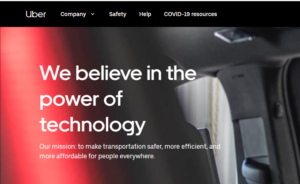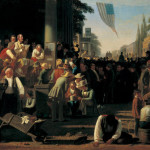Automakers continue to proclaim that fully autonomous vehicles are just around the corner. In 2016, a host of companies, from BMW to Volvo, promised driverless cars by 2021. While that has proven too ambitious, it hasn’t stopped companies from making revised predictions. In May 2020, Volvo announced a partnership with tech firm Luminar to “deliver Volvo’s first fully self-driving technology for highways . . . in 2022.” This, as Google’s Waymo, Uber’s ATG, and Tesla’s Autopilot continue pushing driverless technology forward in a seemingly inevitable march.
While almost three-quarters of Americans remain wary of autonomous vehicles, many can’t quite put their finger on why. This makes them look like nervous Luddites or nostalgic simpletons compared to the sleek technopreneurs proclaiming the way of the future. Yet, as it turns out, the average American might be on to something. There are substantial reasons to hesitate before handing over the keys.
When we explore the broader technological worldview in which autonomous vehicles are situated and weigh the possible impacts of autonomous vehicles on human flourishing, it becomes clear that the worldview behind autonomous vehicles is not freeing for humanity, but presents at best what Neil Postman would call a Faustian bargain. Supposed gains in safety and convenience could bring significant unintended consequences, alienating us from our bodies and eroding our agency.
While almost three-quarters of Americans remain wary of autonomous vehicles, many can’t quite put their finger on why.... Yet, as it turns out, the average American might be on to something.
Start your day with Public Discourse
Sign up and get our daily essays sent straight to your inbox.What’s Driving Driverless Cars: Faith in the Technological Future
Exploring the broader technological context of driverless cars reveals that they are part of what Silicon Valley prophets predict will be a coming age of transhumanism and singularity. To put it simply, this vision seeks “the acceleration of the evolution of intelligent life beyond its currently human form and human limitations by means of science and technology.” Well-known futurist and artificial intelligence expert Ray Kurzweil calls this “the union of human and machine.”
This vision may seem farfetched, but it’s closer than you think and more mainstream than you realize. As Tesla’s CEO Elon Musk predicts, “Over time I think we will probably see a closer merger of biological intelligence and digital intelligence . . . between your brain and the digital version of yourself.”
Autonomous vehicles sit at the gateway to transhumanism’s vision, contributing to the seamless blending of the human and the digital. Promises of autonomous-vehicle safety get us one step closer to overcoming death, while the car develops into a platform of artificial intelligence, synced into the ever-growing internet of things.
 I can’t help but notice the religious nature of this future vision, complete with creeds, a savior, and the promise of immortality—all cloaked in the Darwinian assumptions of evolutionary progress. In what seems to be a confession of first principles, Uber’s self-driving division has emblazoned across its home page: “We believe in the power of technology.” Transhumanists have formulated a declaration of their beliefs in the same way that churches do. In Transhumanism and the Image of God, Jacob Shatzer warns that such futurist visions and their accompanying technologies “change the very way we think about and engage the world around us. They train and disciple us in certain ways . . . drawing us further into a technological liturgy of control.”
I can’t help but notice the religious nature of this future vision, complete with creeds, a savior, and the promise of immortality—all cloaked in the Darwinian assumptions of evolutionary progress. In what seems to be a confession of first principles, Uber’s self-driving division has emblazoned across its home page: “We believe in the power of technology.” Transhumanists have formulated a declaration of their beliefs in the same way that churches do. In Transhumanism and the Image of God, Jacob Shatzer warns that such futurist visions and their accompanying technologies “change the very way we think about and engage the world around us. They train and disciple us in certain ways . . . drawing us further into a technological liturgy of control.”
As autonomous driving technologies diffuse into the marketplace and into our lives, uncovering the worldview at work behind the scenes gives one pause. We find perspectives about humanity and ultimate questions that are at odds with the best of our philosophical and religious traditions. As Matthew Crawford puts it in his new book, Why We Drive, “Driverless cars are one instance of a wider shift in our relationship to the physical world” as we are moving toward a “world that is tailored to your data-self through a process that is beyond your reach.”
Autonomous Vehicles and Alienation from the Body
As everyday tasks like driving are further automated, Crawford continues, what atrophies is our “original animal genius for learning about the world by acting directly on it.” As physical engagement with the world declines, the body seems less necessary, perhaps even obsolete, which contributes to alienation from our own bodies. Autonomous vehicles nudge us further toward this disembodied passivity, with its dualistic separation of mind and body.
In Why We Drive, Crawford posits that embodiment and personal agency in movement can help resist such alienation, and can nurture cognitive development and mental health. He cites a classic study of cats and recent studies of rats, which found that animals who actively transported themselves through their environment exhibited better health and cognition than those who were passively transported or carried.
The extent to which these animal studies apply to humans is debatable. Do we endure some hidden side effect each time we take a cab, ride the subway, or carpool? I think not. Certainly, humans can express agency and active involvement in the world in many ways besides driving, and having to flag down a cab, decipher a subway map, or navigate an airport provides its own fair share of engagement with the world. But the ubiquity of driving in our cultural context, and its relative accessibility compared to learning to conduct a train or fly a plane, make driving a unique field of human action worth holding on to.
As Crawford puts it, “As we grapple with the challenges of automation, [human] flourishing . . . seems to require an environment with ‘open problem spaces’ that elicit . . . bodily and mental engagement.” Driving remains one of the few “open problem spaces” that the vast majority of Americans experience daily. More and more, automation intrudes on realms of embodied action and learning, and “As the space for intelligent human action gets colonized by machines, our intelligence erodes, leading to demands for further automation.” Crawford argues that in such a process “ultimately, it is we who are being automated.”
Is Crawford right on this point? Or, as driverless advocates suggest, would autonomous vehicles free people to devote their intelligence to more meaningful pursuits?
Leisure time certainly can lead to purposeful human activities, as Josef Pieper argues in Leisure: The Basis of Culture. But the reigning understanding of leisure today has more to do with entertainment than self-development. Crawford thus predicts that our commutes would most likely be colonized by Big Tech, and comments like this from Elon Musk indicate that he’s probably right: “Ability to stream YouTube and Netflix when car is stopped coming to your Tesla soon!” With an “amazingly immersive, cinematic feel due to the comfy seats and surround sound audio,” the nudge isn’t toward activities of personal enrichment or quiet reflection. Even if most people used their newfound drive time purposefully, Crawford is right that driving is a valuable exercise in manual competence, which is a vital aspect of the human experience that needs nourishing.
Embodied Agency in Driving and the Possibilities of Social Capital
As “fragile, embodied beings,” Crawford explains, “there is a certain risk that is inherent in moving around, by whatever means.” The measured risk of movement is part of being fully alive, part of what makes us human. Certainly, there are countless ways we express this: running, cycling, skateboarding, or even flying planes. But driving plays a unique role in our society, from functioning as a rite of passage to consuming 70 billion hours of Americans’ time annually. Driving’s ubiquity and accessibility, along with the nature of our built environment and transportation infrastructure, make it a near necessity for most of us. The vast majority of Americans will learn to drive and will drive frequently; few will learn to fly. Thus, maintaining the communal space of human driving offers opportunities to practice embodied agency.
This adds complexity to the more conventional argument regarding the social effects of the automobile, captured by John Thomas in his recent review of Three Pieces of Glass. He writes that the car has “shaped the built environment in ways that are hostile to place and belonging and altered the rhythms and patterns of our relationships in ways that have eroded our social capital.” With help from Matthew Crawford, my argument here is a bit different: the car itself shapes a new space for the exercise of social capital. Crawford engages with Robert Putnam’s work on social capital, especially unpacking social norms and social trust as foundations for successful driving, which also seems compatible with James Coleman’s framework of obligation, expectations, and trustworthiness.
Crawford is not the only one considering driving and social capital. In a 2018 study, Kari Finley et. al. suggest “social capital positively impacts traffic safety, and it also fosters prosocial behaviors among people sharing the road.” Matthew Nagler’s 2011 and 2014 studies on social capital and driving lend further credence to the idea of the road as a space for the development and exercise of social capital.
A flourishing society needs to provide opportunities to encounter the other and the world, and the realm of driving is one area where this can occur, warts and all. The road is one of the few places left where we are confronted with people very different from ourselves, as driving cuts across class and racial lines. Even behind glass, other people and their cars are real things that must be reckoned with. They will not just go away with a cancel-click of a button or the swipe of a finger. In an age when we choose so many of our associations—where we live, who we follow online, what news sources we use—it becomes easy to dismiss others from the comfort of our conveniently constructed digital echo chambers. Not so on the road, as the practice of driving forces us outside this realm Joseph Minich calls “highly tailored community.” In that sense, driving reminds us of our limits as creatures. Autonomous driving might prevent us from dealing with incompetent or selfish drivers, but part of being human is learning to deal with everyone.
A flourishing society needs to provide opportunities to encounter the other and the world, and the realm of driving is one area where this can occur, warts and all.
At its best, human driving enacts social norms of respect and charitable assumptions toward the other; in short, trust and cooperation. As Crawford puts it, “we may experience our car as a humanizing space,” where in order to survive we must abide by certain “informal norms for accommodating one another on the road, relying on our capacity for mutual prediction—that endowment we share as social beings.”
This may sound like too rosy a picture of driving. Is dealing with rush hour traffic really a freeing experience of human flourishing? In fact, Matthew Nagler’s research suggests that social capital is actually more at work in urban driving than rural driving, since busy roads provide more “opportunities for pro-social behavior to play a role.” Crawford addresses traffic, road rage, and related objections in the book, and the essence of his response is that driving requires us to deal with one another in ways that generally lead to mutually acceptable outcomes that could be further refined if celebrated, rather than automated.
The everyday give-and-take of driving normally keeps us from hitting each other, and these small exercises of even reluctant accommodation accumulate into something valuable for human experience, and for living in community. Crawford also suggests a connection to democracy: “democracy remains viable only if we are willing to extend to one another a presumption of individual competence. This is what social trust is built on. Together, they are the minimal endowments for a free, responsible, fully awake people.”
With autonomous vehicle predictions cooling somewhat, now is the time to pause and weigh the tradeoffs. Being a fully awake people suggests being fully awake behind the wheel, and fully awake to the underlying assumptions of the technological worldview that run counter to holistic human health and flourishing. Autonomous vehicles pose risks in contributing to alienation from our bodies and erosion of our agency, leading us to view ourselves as acted upon, rather than as free actors. So when Tesla delivers you a targeted ad to preorder your driverless car, I hope you’ll think twice before clicking.














